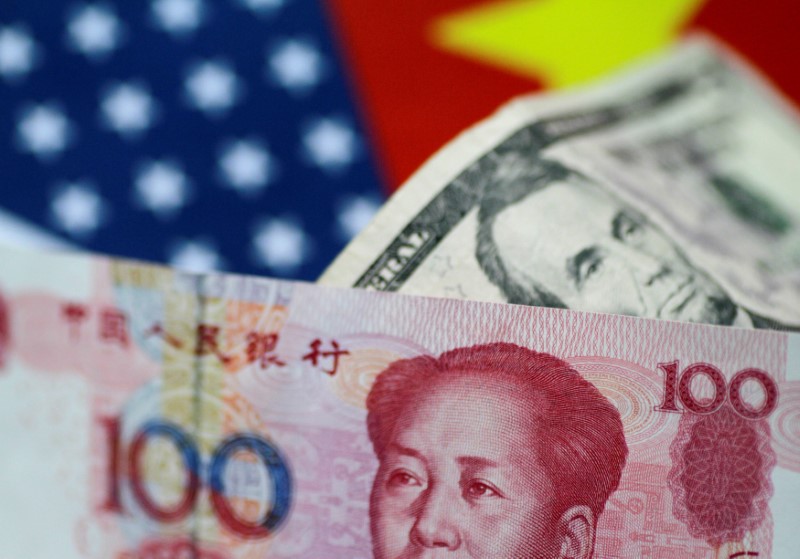Title: Chinese Yuan Hits Four-Month Low Amid U.S. Trade Tensions
The Chinese yuan slumped to a four-month low against a strengthening U.S. dollar, following threatening remarks made by President-elect Donald Trump regarding imposing steep tariffs on BRICS nations, which include Brazil, Russia, India, China, and South Africa. Trump’s social media warning, which suggested a 100% tariff on any nation undermining the dollar’s global dominance by pursuing alternative currencies, has roused considerable alarm across Asian markets. This heightened rhetoric from the U.S. has triggered fears of an escalating trade war, particularly in the wake of Trump’s previous announcements to hike tariffs on imports from China, Mexico, and Canada.
The economic ramifications of Trump’s recent threats began to materialize immediately, with risk-driven markets in the Asia-Pacific region suffering as investor sentiment turned sour. Concurrently, the U.S. dollar advanced, benefiting from its status as a safe-haven asset, with the greenback rising by 0.5% while other regional currencies like the South Korean won and the Japanese yen faced substantial declines. The won and yen fell approximately 0.6% and 0.7%, respectively. This ripple effect further included losses for the Singapore dollar and the Thai baht, both of which fell by around 0.5%.
In a contrary trend, the Indian rupee managed to appreciate slightly against the dollar, rising 0.2% to a record high of 84.708 rupees. However, market pressures were felt as India reported slowed growth in the July-September quarter, although it managed to maintain its status as the world’s fastest-growing major economy, outpacing China’s growth rate of 4.6% during the same period.
Despite the ongoing tensions, China’s yuan saw a brief sojourn as its onshore exchange rate modestly increased by 0.3%, touching its highest level since late July. This uptick came despite the backdrop of heightened geopolitical tensions and sluggish exports. Positive economic indicators, especially the November purchasing managers’ index data revealing a recovery in factory output, provided some balm to the markets. Nevertheless, concerns lingered regarding the broader impact of trade disputes on China’s economic outlook.
As the financial landscape evolves, the U.S. dollar has found itself on a positive trajectory; investors are anticipating a deceleration in the Federal Reserve’s path toward interest rate cuts. While a quarter percentage cut in rates is expected in the Fed’s upcoming December meeting, many market participants are keenly eyeing further insights on the central bank’s monetary policy. The Fed’s upcoming speech on Wednesday, coupled with important economic data from the U.S. later in the week, is likely to set the tone for financial markets.
In the Asia-Pacific realm, additional scrutiny will focus on the Reserve Bank of India’s upcoming policy review on Friday, with expectations leaning towards maintaining current interest rates in light of persistent inflation. Furthermore, Australia’s release of third-quarter economic figures slated for Wednesday will be closely monitored for implications on regional economic sentiment. As global economic tensions persist, market dynamics are anticipated to remain volatile, prompting investors to reassess their strategies amid the unfolding geopolitical landscape.





